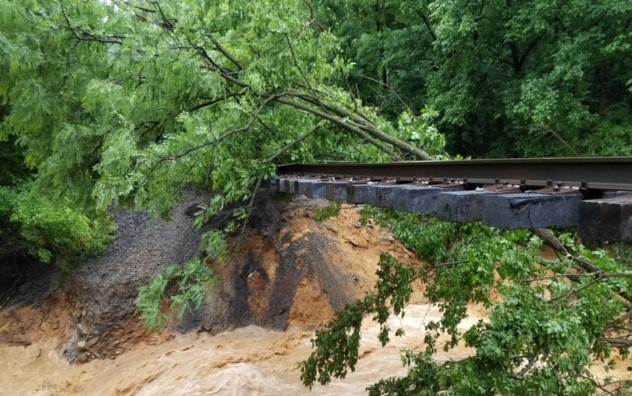
Aging infrastructure is a hot topic in the U.S. We see the federal government working to pass a multitrillion-dollar infrastructure bill. While most of the focus is on roadway infrastructure, the railroad industry is also dealing with this issue. It has been estimated that up to 60% of all bridge failures result from either scour or other hydraulic causes. Streams and rivers are dynamic and can be unpredictable, when considering bridge design lives of 50 or 100 years. The capacity of a bridge to convey flow has a significant influence on a stream’s ability to transport sediment and can increase shear forces on the channel bed, causing hydraulic instability. As runoff increases with expanding development, and the aging railroad infrastructure is often more than 50 or even 100 years old — a problem has developed. Throw in climate change with larger, more frequent flooding, and the issue is now critical.
Improving the hydraulic capacity of bridges serves to relieve hydraulic pressure on bridge embankments, reduce the potential for scour — when currents move sediment away from or against bridge piers, which changes the flow around the piers — and promote the passage of debris. The size of a bridge opening must ensure that stable hydraulic conditions persist. An accurate depiction of stream stability and scour potential is critical in the design of proposed foundations and determining if the existing structure foundations are susceptible to undermining.
When designing bridge crossings, it is imperative to take a comprehensive approach, looking beyond present-day stream conditions. Historic migratory patterns can provide a window into the stability of the stream and help inform potential future conditions. Long-term channel degradation can occur in vertical and horizontal directions, often requiring separate approaches for mitigation. Unstable stream slopes, natural and artificial knickpoints and the sinusoidal pattern of streams can all contribute to long-term stream degradation and hydraulic instability.
Hanson recognizes the importance of addressing not only the physical restrictions of a bridge but also the balance in the upstream watershed. A hydrologic analysis using rainfall data, stream gages and regional hydrologic equations can provide insight into climate trends and inform sustainable design. Watershed development can often lead to increased runoff into rivers, influencing the future capacity of the structure.
We have an extensive background in finding hydraulic solutions that provide a balance between cost, constructability, minimizing track downtime and long-term sustainability. Our experience in bridge hydraulics spans stream restoration, river training and diversion using natural and hard armor techniques, sediment transport, detailed scour analysis and countermeasure design. We use advanced hydrologic and hydraulic modeling techniques to develop the optimal design for existing, proposed, temporary and emergency replacements, including the forensic analysis of failures.
Contact Garrett Litteken at glitteken@hanson-inc.com to discuss hydraulic concepts for your rail infrastructure.
This article first appeared on Hanson’s Ideas on Track blog on Aug. 9, 2021.